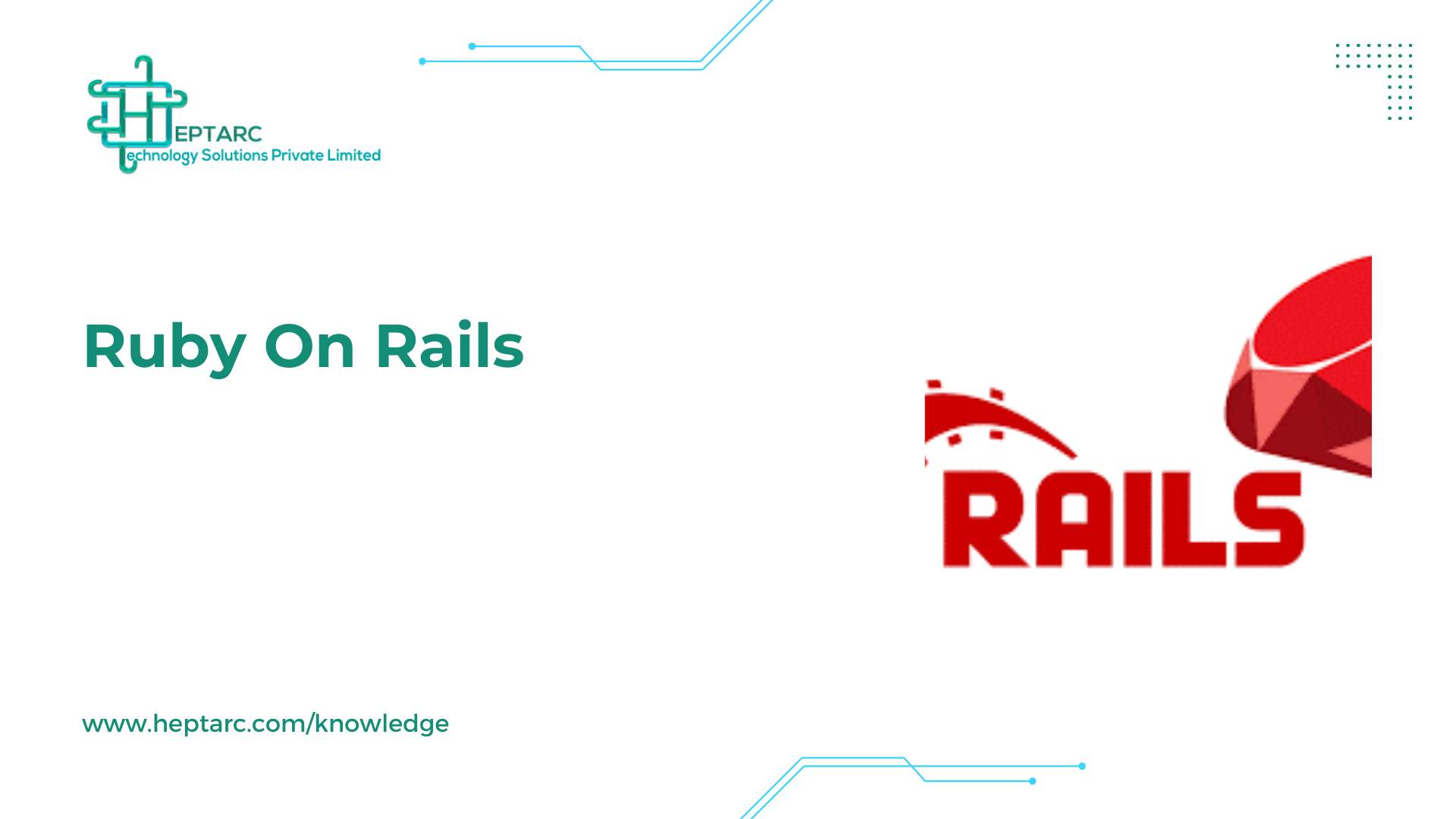
Ruby On Rails
Introduction
Ruby on Rails or also known as rails is a server-side web application development framework that is written in the Ruby programming language, and it is developed by David Heinemeier Hansson under the MIT License. It supports MVC(model-view-controller) architecture that provides a default structure for database, web pages, and web services, it also uses web standards like JSON or XML for transfer data and HTML, CSS, and JavaScript for the user interface. It emphasizes the use of other well-known software engineering pattern and paradigms like:
- Don’t Repeat Yourself (DRY):It is a principle of software development to reducing the repetition of information or codes.
- Convention Over Configuration (CoC): Itprovides many opinions for the best way to do many things in a web application.
- Ruby on Rails was first released in July 2004 but until February 2005 did not share the commit rights. In August 2006, it would ship Ruby on Rails with Mac OS X v10.5 “Leopard”. Ruby on Rail’s latest version(Rail 5.0.1) released on December 21, 2016. Action cable, Turbolinks 5, and API mode Introduced in this version.
Table of content
- Introduction
- What is Ruby on Rails
- Why Ruby on Rails
- Examples
- What are the advantages
- What are the disadvantages
- Conclusion
- Bibliography
What is Ruby On Rails?
Ruby on Rails (RoR) is open-source full-stack framework software specifically to build different web applications. Ruby on Rails has two parts: Ruby- The general-purpose programming language that’s super versatile. Rails – Frameworks for creating websites, apps, and systems.One of the key principles of Ruby on Rails is “convention over configuration,” which means that the framework makes assumptions about how things should be done, reducing the need for developers to specify configurations explicitly. This approach helps developers to write less code and focus more on solving business problems rather than dealing with boilerplate code.
Why Ruby on Rails?
- It allows you to launch a faster web application.
- Saves your money by using the Ruby on Rails framework.
- Helps us with maintaining and avoiding problems with stuff migration.
- Ruby on Rail Framework makes our app faster and safer.
- We can easily update our app with the latest functionality.
- It uses Metaprogramming techniques to write programs.

Examples
1.GitHub: One of the most popular version control platforms, GitHub is built on Ruby on Rails. It offers features like code hosting, collaboration, and project management for software development teams.
2.Airbnb: A leading online marketplace for lodging and tourism experiences, Airbnb was initially developed using Ruby on Rails. It connects travelers with hosts who offer unique accommodations around the world.
3.Basecamp: A project management and collaboration tool, Basecamp is another successful application built using Ruby on Rails. It allows teams to organize tasks, share files, communicate, and track project progress.
4.Shopify: An e-commerce platform that enables businesses to create and manage online stores, Shopify is built on Ruby on Rails. It offers a wide range of features for selling products, managing inventory, and processing payments.
5.Twitch: A live streaming platform primarily focused on video games, Twitch uses Ruby on Rails for its web development needs. It allows users to watch and broadcast live streams, chat with other viewers, and engage with content creators.
6.Yellow Pages: The digital version of the traditional Yellow Pages directory, Yellow Pages’ website is built using Ruby on Rails. It helps users find businesses, services, and products in their local area.

What are the Advantages
- Tooling:Rails provides tooling that helps us to deliver more features in less time.
- Libraries:There’s a 3rd party module(gem) for just about anything we can think of.
- Code Quality:Ruby code quality significantly higher than PHP or NodeJS equivalents.
- Test Automation:The Ruby community is big into and test automation and testing.
- Large Community:Ruby is large in the community.
- Productivity:Ruby is incredibly fast from another language. Its productivity is high.
What are the Disadvantages
- Runtime Speed:The run time speed of Ruby on Rails is slow as compare to Node.Js and Golang.
- Lack of Flexibility: As we know that Ruby on Rails is ideal for standard web applications due to its hard dependency between components and models. But when it comes to adding unique functionality and customization in apps it is challenging.
- Boot Speed:The boot speed is also a drawback of ROR. Due to the dependence upon the number of gem dependencies and files, it takes some time to start which can obstruct the developer performance.
- Documentation:To find good documentation is hard for the less popular gems and for libraries that make heavy use of mixins.
- Multithreading:Ruby on Rails supports multithreading, but some IO libraries do not support multithreading because they keep hold of the global interpreter lock. So it means if you are not careful enough, your request will get queued up behind the active requests, and you will face performance issues.
- Active Record:Due to the access use of Active records in the ROR and hard dependency, the domain becomes tightly coupled to your persistence mechanism.
Bibliography
CONCLUSION
In conclusion, Ruby on Rails stands as a robust and dynamic web development framework that continues to empower developers worldwide. Its convention over configuration principle, coupled with its emphasis on DRY (Don’t Repeat Yourself) coding practices, significantly streamlines the development process, allowing for rapid prototyping and efficient project execution.
As the digital landscape continues to evolve, Ruby on Rails remains a stalwart choice for developers seeking to build robust, scalable, and maintainable web applications. Its versatility, combined with its ease of use and strong community support, positions it as a leading framework in the realm of web development, promising a bright future for both seasoned developers and newcomers alike.

